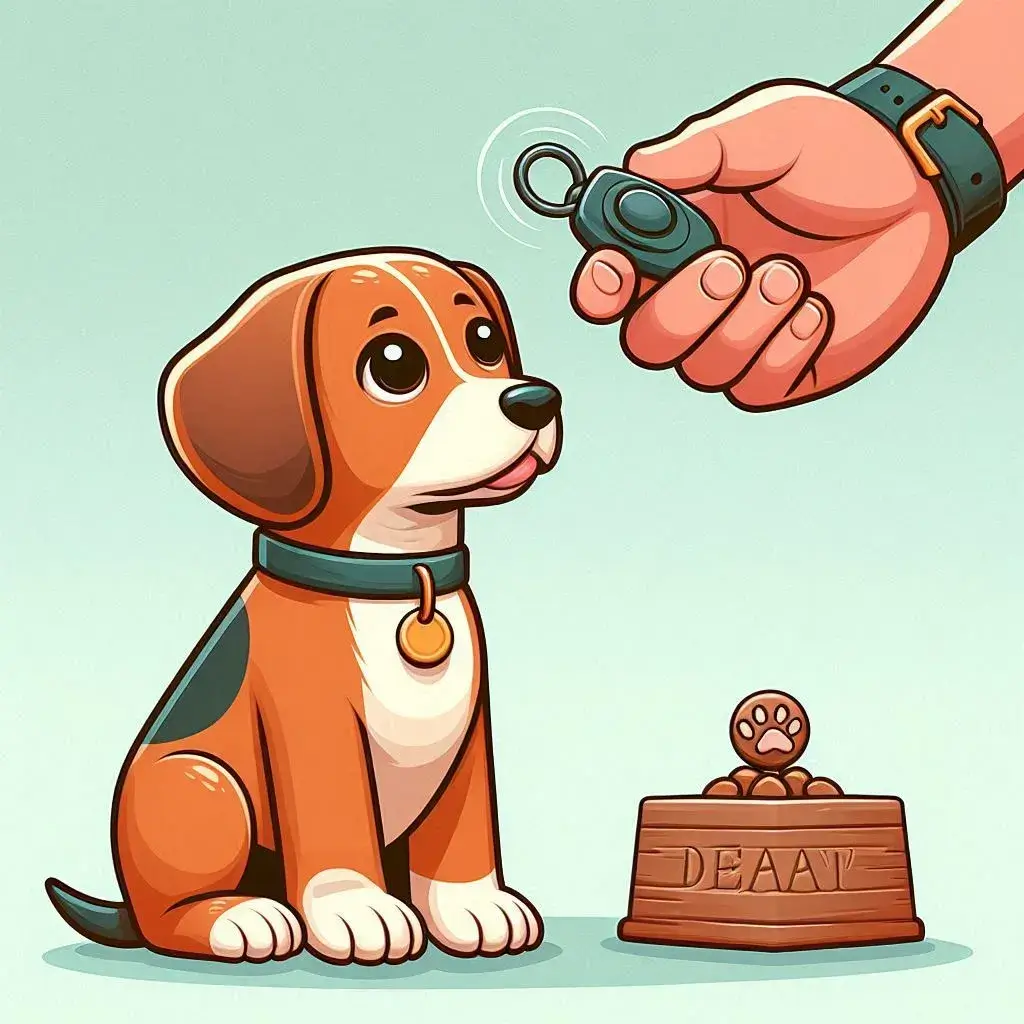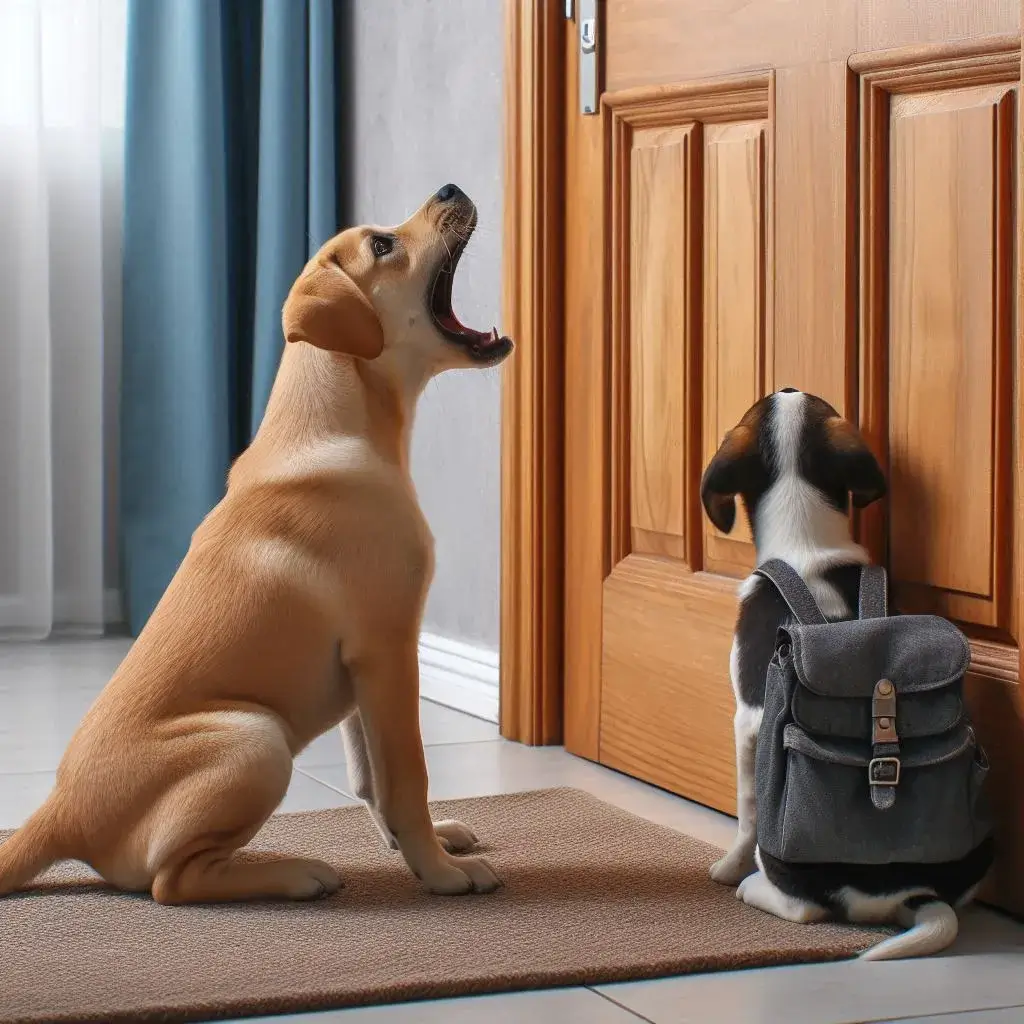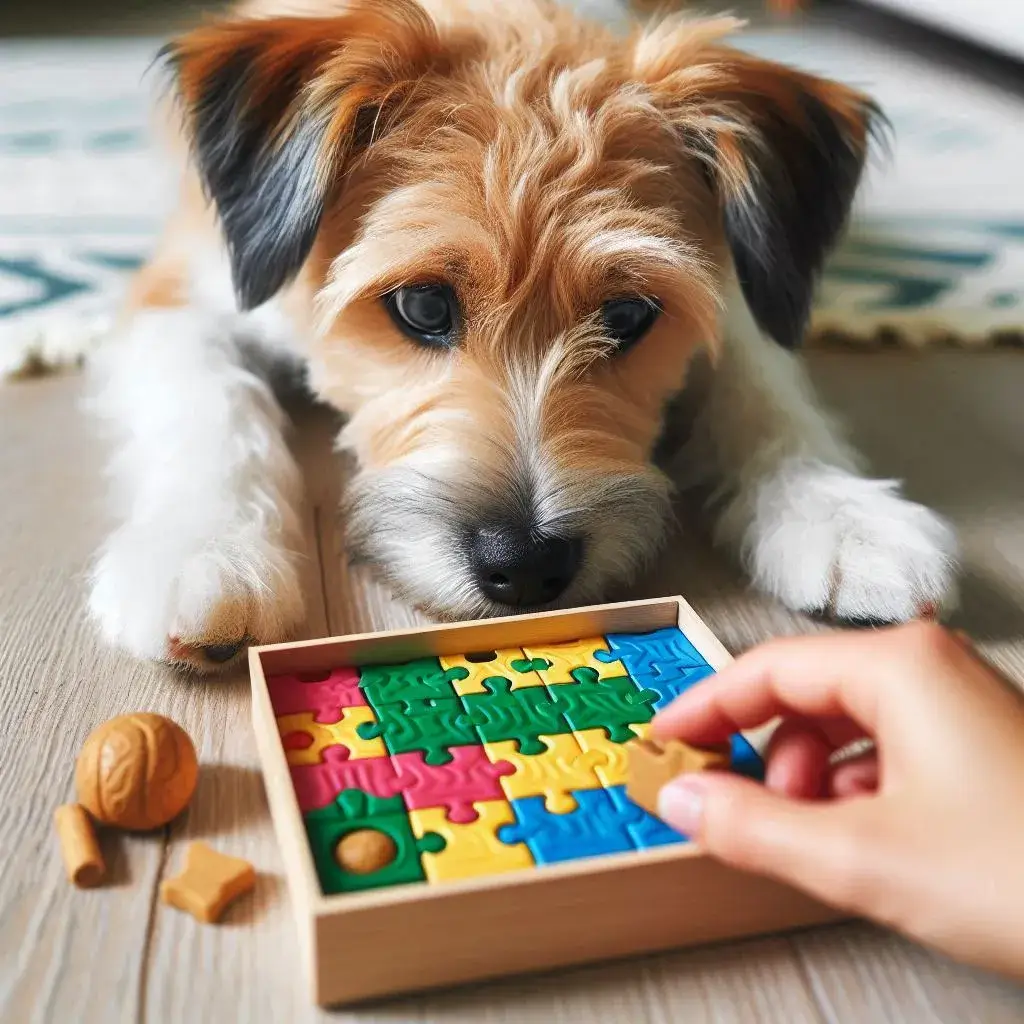Tips for Raising a Well-Behaved Dog: A Comprehensive Guide for Pet Owners
Raising a well-behaved dog is one of the most rewarding aspects of pet ownership. A well-mannered dog enhances the bond between pet and owner and ensures a harmonious relationship with other people and animals. This guide will walk you through essential tips and techniques to help you raise a dog that’s a joy to live with.
Understanding Dog Behavior

The Importance of Early Training
Training your dog from an early age is crucial for establishing good behavior. Puppies are like sponges, absorbing information and behaviors that will stick with them throughout their lives. Early training helps set boundaries and expectations, making correcting bad habits easier before they become ingrained.
Socialization: The Foundation of Good Behavior
Socialization is a key aspect of early training. Exposing your puppy to various people, environments, and other animals will help them develop confidence and reduce anxiety in unfamiliar situations. The more positive experiences your dog has during the socialization period, the more likely they are to behave well in a variety of settings.
Understanding Canine Communication
Dogs communicate through body language, vocalizations, and behaviors. Learning to read your dog’s signals can help you address issues before they escalate. For example, a dog that is growling or showing its teeth is signaling discomfort or fear. By understanding these cues, you can intervene and prevent unwanted behavior.
Recognizing Stress Signals
Stress signals such as yawning, licking lips, or avoiding eye contact can indicate that your dog is feeling overwhelmed. By recognizing these signs, you can take steps to remove your dog from the stressful situation or calm them down, which will help prevent aggressive or destructive behaviors.
Basic Training Techniques

Positive Reinforcement
Positive reinforcement is one of the most effective training techniques. Rewarding your dog with treats, praise, or playtime when they exhibit desired behaviors encourages them to repeat those actions. This method not only builds trust between you and your dog but also makes training sessions enjoyable for both parties.
Clicker Training
Clicker training is a form of positive reinforcement where a clicker is used to mark the exact moment your dog performs the desired behavior. The click sound is immediately followed by a reward, helping your dog quickly associate the action with positive outcomes. This method is particularly useful for teaching new commands and tricks.
Consistency in Commands
Consistency is key when training a dog. Use the same commands and signals for specific behaviors, and ensure that all family members are on the same page. Inconsistent training can confuse your dog and make it harder for them to understand what is expected.
Establishing a Routine
Dogs thrive on routine. Establishing a consistent daily schedule for feeding, walks, and playtime helps your dog know what to expect and when. This predictability can reduce anxiety and encourage better behavior.
Addressing Common Behavioral Issues

Dealing with Separation Anxiety
Separation anxiety is a common issue, especially in dogs that are very attached to their owners. Signs include excessive barking, destructive behavior, and accidents in the house when left alone. To address this, gradually increase the time your dog spends alone, provide plenty of mental and physical stimulation, and consider crate training as a safe space for your dog while you’re away.
Crate Training for Separation Anxiety
Crate training can be an effective tool in managing separation anxiety. The crate should be a positive space, not a punishment. Start by introducing your dog to the crate with the door open, using treats and toys to create a positive association. Gradually increase the time your dog spends in the crate, always ensuring they are calm and comfortable before closing the door.
Managing Aggressive Behavior
Aggression can stem from fear, territoriality, or dominance. It’s important to address aggressive behavior early to prevent it from becoming dangerous. Work with a professional dog trainer or behaviorist to identify the root cause of the aggression and develop a plan to address it.
Redirecting Aggression
If your dog shows signs of aggression, such as growling or snapping, redirect their attention to a more appropriate behavior. For example, if your dog is guarding their food, teach them the “leave it” command and reward them when they comply. Consistent training and positive reinforcement can help modify aggressive behaviors over time.
Curbing Excessive Barking
Excessive barking can be frustrating for both you and your neighbors. Understanding why your dog is barking is the first step in curbing this behavior. Dogs bark for various reasons, including boredom, anxiety, or as a form of communication.
Teaching the “Quiet” Command
Teaching your dog the “quiet” command can help manage excessive barking. Start by allowing your dog to bark a few times, then gently hold their muzzle and say “quiet” in a calm, firm voice. Once your dog stops barking, reward them with a treat. Consistent practice will help your dog understand when it’s time to be quiet.
Advanced Training and Enrichment

Teaching Advanced Commands
Once your dog has mastered basic commands like sit, stay, and come, you can move on to more advanced training. Teaching tricks like “roll over,” “play dead,” or agility commands can provide mental stimulation and strengthen the bond between you and your dog.
Incorporating Games into Training
Games like fetch, hide and seek, or tug-of-war can be incorporated into training to make it more engaging for your dog. These activities not only provide physical exercise but also teach your dog to follow commands in a fun and interactive way.
Mental Stimulation and Puzzle Toys
Mental stimulation is just as important as physical exercise for your dog’s well-being. Puzzle toys, treat-dispensing balls, and interactive games can keep your dog’s mind sharp and prevent boredom, which can lead to destructive behaviors.
DIY Enrichment Ideas
You don’t need to spend a lot of money on expensive toys to keep your dog entertained. DIY enrichment ideas like hiding treats around the house, creating a simple obstacle course, or using a muffin tin with tennis balls over treats can provide hours of entertainment and mental stimulation.
The Role of Diet and Exercise

The Impact of Diet on Behavior
A well-balanced diet is crucial for your dog’s overall health and behavior. Poor nutrition can lead to hyperactivity, lethargy, or even aggression. Consult with your veterinarian to ensure your dog is getting the right nutrients and consider a high-quality diet that supports their specific needs.
Understanding Food Allergies
Food allergies can manifest in behavioral changes such as irritability or restlessness. If you notice any changes in your dog’s behavior after switching food, consult your vet to rule out allergies or sensitivities.
Regular Exercise for a Well-Behaved Dog
Exercise is essential for a well-behaved dog. Regular physical activity helps burn off excess energy, reducing the likelihood of destructive behavior. Depending on your dog’s breed and age, this could range from daily walks to more intensive activities like running or agility training.
Tailoring Exercise to Your Dog’s Needs
Different breeds have different exercise requirements. For example, a Border Collie may need several hours of activity per day, while a Bulldog may only need a short walk. Understanding your dog’s specific needs will help ensure they get the right amount of exercise to stay healthy and happy.
Building a Strong Bond with Your Dog
The Importance of Positive Interaction
Building a strong bond with your dog is essential for a well-behaved pet. Positive interactions, including playtime, grooming, and training sessions, reinforce the bond between you and your dog. The stronger your relationship, the more likely your dog is to listen and respond to your commands.
Spending Quality Time Together
Quality time doesn’t just mean playtime or training; it also includes quiet moments like sitting together or giving your dog a gentle massage. These moments of calm can strengthen your bond and make your dog feel secure and loved.
Trust-Building Exercises
Trust is the foundation of any strong relationship, and the same goes for you and your dog. Trust-building exercises, such as slowly introducing new environments or working on recall commands in a safe space, help build confidence and reliability.
Gradual Exposure to New Experiences
Gradually exposing your dog to new experiences, such as car rides, meeting new people, or encountering different animals, can help build their confidence and reduce fear-based behaviors. The key is to make these experiences positive by providing treats, praise, and reassurance.
Grooming and Health Maintenance

Regular Grooming for Better Behavior
Regular grooming isn’t just about keeping your dog looking good; it’s also important for their behavior. A clean, well-groomed dog is more comfortable and less likely to develop skin irritations or other issues that can affect their mood and behavior.
Making Grooming a Positive Experience
Many dogs are apprehensive about grooming, so it’s important to make it a positive experience. Start by introducing grooming tools slowly, rewarding your dog with treats and praise during the process. Over time, your dog will associate grooming with positive experiences, making them more cooperative.
Routine Veterinary Check-Ups
Routine veterinary check-ups are essential for catching any health issues that might affect your dog’s behavior. Regular health screenings, vaccinations, and dental care all contribute to your dog’s overall well-being and can prevent behavior problems related to pain or illness.
Identifying Health-Related Behavioral Changes
Changes in behavior can sometimes be linked to health issues. For example, a normally well-behaved dog that suddenly becomes aggressive or anxious may be experiencing pain or discomfort. If you notice any sudden changes in your dog’s behavior, it’s important to consult your veterinarian.
Training Tools and Resources
Choosing the Right Training Tools
The right training tools can make a significant difference in your dog’s behavior. Collars, leashes, harnesses, and training aids like clickers and treat pouches should be chosen based on your dog’s specific needs and training goals.
Benefits of a Harness vs. Collar
For dogs that tend to pull on the leash, a harness can be a better option than a collar. A harness distributes pressure more evenly across your dog’s body, reducing strain on their neck and making it easier to control them during walks.
Online Resources and Professional Help
If you’re struggling with training your dog or addressing behavioral issues, there are plenty of online resources available, including videos, blogs, and forums. However, if the issues persist, seeking professional help from a certified dog trainer or behaviorist is recommended.
Finding a Qualified Dog Trainer
When looking for a dog trainer, it’s important to choose someone who uses positive reinforcement methods and has experience with the specific issues you’re facing. Look for trainers who are certified by recognized organizations like the Association of Professional Dog Trainers (APDT).
FAQs About Raising a Well-Behaved Dog

1. How long does it take to train a well-behaved dog?
Training a dog is an ongoing process that varies depending on the dog’s age, breed, and temperament. Basic obedience training typically takes a few months, but reinforcing good behavior is a lifelong commitment.
2. What should I do if my dog is aggressive?
If your dog shows signs of aggression, it’s important to consult a professional dog trainer or behaviorist. Aggression can stem from various causes, and a professional can help you identify the root cause and develop a plan to address it.
3. How can I stop my dog from barking excessively?
To curb excessive barking, first determine the cause. Use positive reinforcement to teach your dog the “quiet” command, and ensure they’re getting enough mental and physical stimulation to prevent boredom.
4. What’s the best way to socialize a puppy?
The best way to socialize a puppy is by gradually exposing them to a variety of people, places, and other animals in a positive and controlled manner. Puppy classes, playdates, and walks in different environments are great for socialization.
5. Can diet affect my dog’s behavior?
Yes, diet can significantly impact your dog’s behavior. A balanced diet that meets your dog’s nutritional needs can improve their mood and energy levels, while poor nutrition can lead to behavioral issues.
6. How do I know if my dog is stressed?
Signs of stress in dogs include yawning, lip licking, avoiding eye contact, and changes in behavior such as aggression or withdrawal. If you notice these signs, try to identify and remove the stressor or consult with a veterinarian.
Raising a well-behaved dog requires time, patience, and consistency. By understanding your dog’s needs, using positive reinforcement techniques, and addressing behavioral issues promptly, you can ensure that your dog grows up to be a happy, well-adjusted companion.


